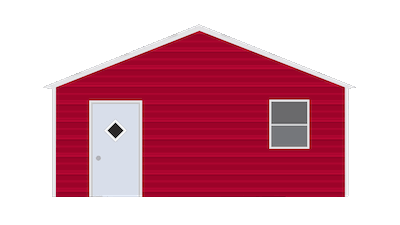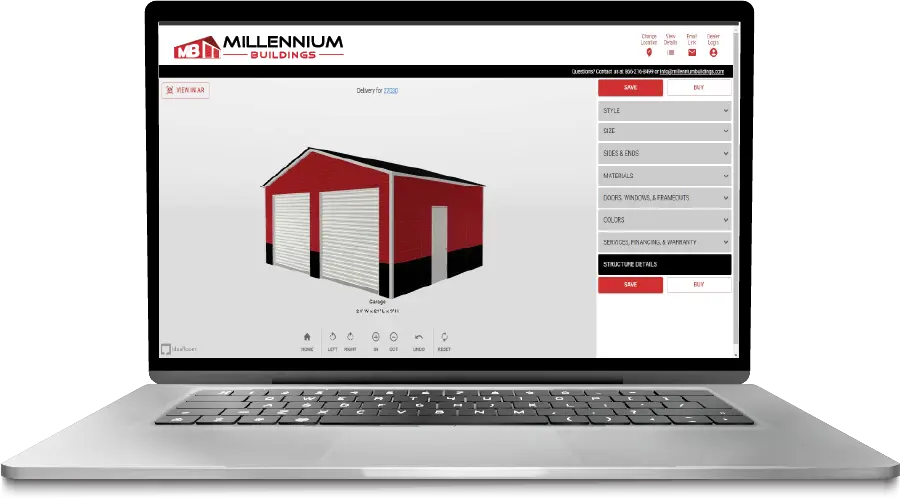Metal Carport – RV Carport Buying & Install Guide
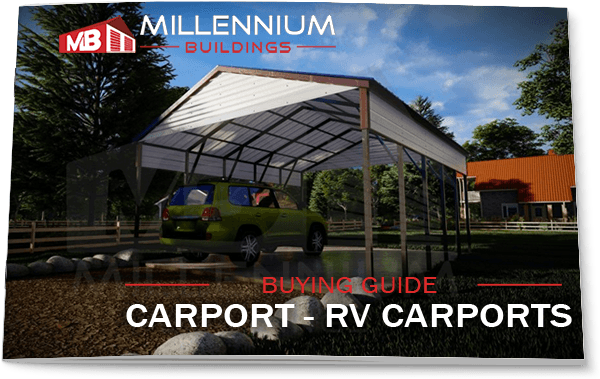
What to consider When Buying a Metal Carport / RV Carport
Type of Vehicle
First and foremost, think of the vehicles that you’ll be keeping in your carport. Is it car, truck, RV, trailer, boat, tractor, motorcycle, or any other vehicle that you own? Do you have one vehicle or multiple vehicles to store in this carport? Finding answers to these questions is what’s going to give you an idea about the ideal size of carport that would suffice for your vehicle needs. Millennium Buildings provides carports for single car or 2 cars, as you require. Our carports can be custom built if you want to store multiple vehicles, or if you want the carport to be taller to accommodate vehicles like tractors and trucks.
Intended Location for Carport
Decide where you would want your carport to be installed. For example, you may want it to be installed adjacent to or near your house so that you can have eyes on your vehicle all the time. The space you allocate to carport installation should be big enough for starters; our team will need this space to carry out the installation of your carport or RV carport efficiently. The intended space for installation should be easy to access by our team. Plus it should also feature a level surface to allow for customized metal carport installation. Make sure your intended carport space meets all of these criteria.
Need for Certification
Some local building regulations require certification and approval of metal carports at the time of installation to ensure that the carport stands robust against particular threshold of snow and wind. As part of this certification process, a local inspector assesses the carport installation site and the structure design plans and determines if everything’s good to go. Check with your local regulations to see if such an inspection requirement is applicable for your carport installation. In case you do need to get your carport certified, you can reach out to our customer services team to understand how we can help you and all the necessary measures that you would have to take.
Weather Evaluation
Your carport should be more than just a structure to keep away the sun and the rain. Take into account the local weather conditions as you plan the construction of your custom metal carport. Does your area receive heavy rain, snowfall or extreme wind during some parts of the year? If that is so, you’re going to need a carport structure that can withstand those rare but tough weather conditions as well. Depending on your area’s weather conditions, anchoring structures in concrete or enclosed structures may do the trick.
Style Selection
Last but not the least, there comes the style and design of your carport. The advantage of building a custom carport is that you get to choose the final look of your carport, in terms of colors options and roof types. Having this freedom can be very important, especially if your carport is going to be an extension of your home. In that case, you want the carport and home to complement each other. Give us a call to know about the various metal carport/RV carport styles that we offer.
Roof Style
Roofing is an essential component of a carport, given that it’s responsible for the ultimate protection of the vehicle against the sun, the rain, the snow, etc. As you build your custom metal carport, you can choose your desired roof from three basic styles as described below:
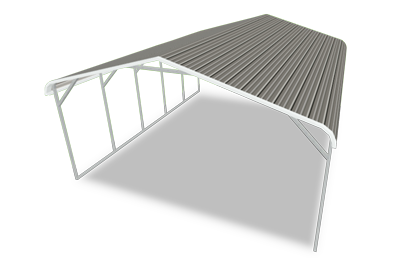
Regular
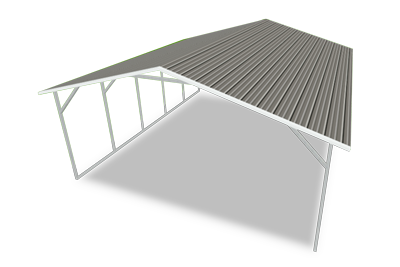
Boxed Eave
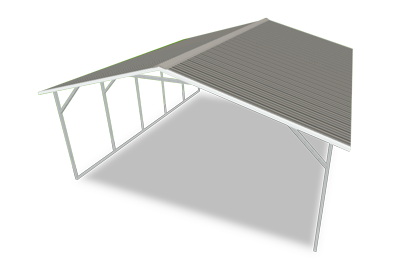
Vertical
Choosing the Right Size for your needs
LENGTH
When deciding the length of your metal carport or RV carport, list out all the possible uses for the carport. Are you planning to fit just one vehicle in your carport or multiple vehicles? The standard lengths available for carports are 21′, 26′, 31′, and increasing so on by 5′. While a standard midsize car can easily fit into a 21 foot long metal carport, a custom length carport may be needed if you have more advanced storage needs that go beyond cars, such as large equipment, family bikes, etc. Also the carports roof will have slightly more length than its base due to the overhang on the roof’s ends.
WIDTH
Your metal carport/RV carport should have the right width to fit in all your equipment and/or vehicles. The standard widths that you can get in carports are 12’, 18’, 20’, 22’, 24’, 26’, 28’, 30’, 32’, 34’, 36’, 38’, and 40’. The width that’s going to work for you would depend on your storage requirements. 12 foot width works for one truck, car, or RV, 18 foot width works for 2 compact cars, 20 foot width works for 2 mid-sized cars, and 22 foot width works for 2 full-sized cars, SUV, or trucks. To figure out the correct width for your particular vehicle storage needs, speak to our experts.
SIDE HEIGHT
By height of your metal carport we mean the side height, which is the height of the carport’s sides. It is this height that we need to concern ourselves about to enable the vehicles to comfortably get in and out of the carport. The standard carport height offered is 6′. If the carport has a width of 32′ or more, the height can go up to 8′. Additionally, if you want to keep the option of carport enclosing and garage door installation open for the future, then it’d be best if you factor in the requisite height for that at the time of carport installation itself.
Steel Gauge Framing
You have two key options available for choosing the steel gauge framing for your custom metal carport or RV carport: 12-gauge steel framing and 14-gauge steel framing. While both have good structural strength that ensures safety, one can be a better option than the other based on your needs. For your information, all gauge options offered by Millennium Buildings can be certified.
14-Gauge Steel Framing
An economical choice, which is also the industry standard in steel frame thickness and is quite commonly used in carports. The diameter of this gauge framing is 2 ½” x 2 ½”.
12-Gauge Steel Framing
Because this steel framing has a lower gauge number, it is thicker, stronger, and has better wind and snow load ratings. The diameter of this gauge framing is 2 ¼” x 2 ¼”. You should use the 12-gauge steel framing if winds and snowfall can get quite extreme in your area. This framing is also recommended option for carports with height 10′ or more. Millennium Buildings does offer extended warranty with 12-gauge steel framing.
Certification Considerations
To be in compliance with the local building regulations, one of the most important things that you should do is see if you need to get your carport building inspected and certified by a professional engineer/inspector. The requirement for certification varies from state to state. In states where extreme wind, rain, and snowfall aren’t a problem, building certification may not be necessary. In some states certification is required for all newly built structures. In some states the certification requirement may exist only for the structures in which people will be living or working in.
As you can see, the need for building certification isn’t the same everywhere. If the weather conditions in particular states can get nasty, those states can enforce certification requirement to ensure that the constructed structure adheres to proper specifications and applicable building requirements, possesses the right snow and wind load ratings and serves as a safe space for the public. Confirm with your local departments if there’s any certification that you need to acquire for your carport installation. Let us know so that we can assist you in the carport preparation and installation accordingly and also provide you with the building blueprints that you can show to the inspection team for review.
A few important things that you need to ensure before the installation work can begin, leveling the ground on which the metal carport/RV carport has to be installed and keeping the poured slab wide enough for ensuring robust support to the building.
Additional Options
Millennium Buildings offer diverse ways in which you can customize your metal carport for your specific needs. Here are some different items that you can add to your carport for enhancing its functionality.
Gable Ends – As the triangle of material covering up the top roof section of the building a gable is a vital element to add to your carport. What gable ends do is hide the braces and the frame, thus improving the carport’s overall look and giving it a refined touch. Gable ends also give extra framing support and strength to the carport structure for higher tolerance against extreme climate conditions, which ultimately translates to enhanced safety for the equipment and vehicles that you are keeping in your carport. You can add gable ends to any metal carport. While you can make this addition any time after the carport installation too, you can save a lot if you add them at the time your carport is getting installed.
J-Trim – If you don’t want the panel edges of your metal carport/RV carport to remain exposed and pose danger, consider covering them up with a decorative trim like J-trim. This type of trim enriches the look of the carport as well as gives a greater assurance of safety and peace of mind especially when you have kids around.
Side Panels – Side panels are a great way to make your metal carport/RV carport structure stronger and more stable and supported. They extend the roof a bit and cover a section of the structure’s sides. These panels added to the carport’s sides will ensure increased protection for the vehicles and equipment kept inside. If you’re planning to build metal carports or RV carports of a height greater than 10′, then install at least one panel on each side of your structure for reinforcement. Side panels are a necessary addition in regions that receive heavy winds. To learn about which side panels are the perfect fit for your carport, speak to our sales team.
Anchors – You have to be careful in deciding the suitable anchors for your metal carport/RV carport, keeping in mind the type of carport installation that you are going for. We can anchor carports to poured asphalt, concrete slab, or solid ground. You should go for a level concrete base to anchor your building to if it is to be certified. Keep the base prepared when our team arrives for installation so that they can go straight ahead with anchoring the carport. You are welcome to talk to our team to understand the various anchor types and how we anchor metal carports.
Bows and Trusses – For a boost in the stability and strength of your metal carport/RV carport, add some additional structural supports in the form of bows and trusses to the building. By installing them on the inside of the roof or along the sides, you can ensure greater stabilization and support for your carport, which could be a necessary advantage to have if your area receives extreme weather. You can add bows and trusses to your carport any time post installation, but there will be extra charges for the return trip taken by our team to install them later. Metal carports of width up to 24′ will include a bow, and metal carports of width more than 24′ will include a truss.
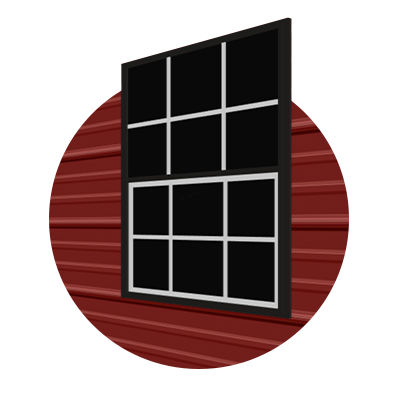
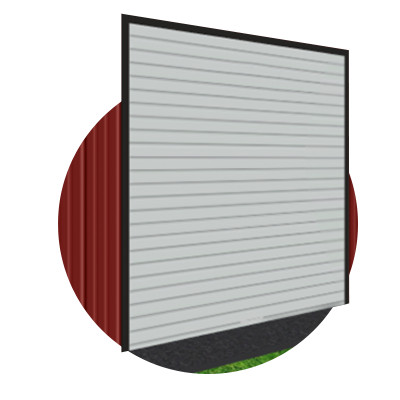
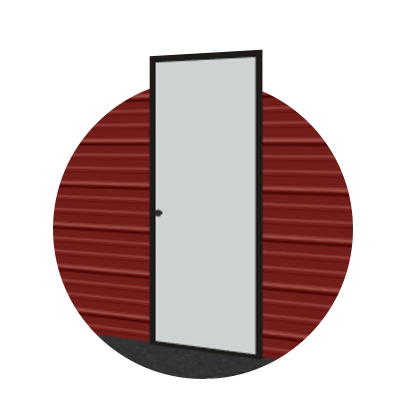

Colors
we offer 16 colors to customize your Carport
Call our customer service representatives to see what colors are available in your area. You can customize the color of the roof, sides, and trim of your structure. Click on the colors for a closer look!
Installation and Site Prep for Workshops
Base Preparation
A solid foundation is the key to a solid and robust structure. It’s essential that you prepare your metal carport/RV carport base properly before the installation work begins. Level the carport installation site; if it’s going to be a certified carport, level the area to within 3 inches front to back and side to side. Our team won’t be able to carry out the installation work if the area isn’t leveled. The installation team may have to come back again later, which would mean time delay and more expenses for you in your carport installation.
Concrete Pads
The dimensions of the concrete pad need to be exactly the same as that of the building frame in all states, Florida being an exception. If you live in Florida, you have to make sure that the width of your concrete pad is 3/4 inch more than the building frame dimensions, while keeping the length of the concrete pad and the building frame the same. Keep the shape of the concrete pad a perfect square. Remember that zoning and building departments of different cities or counties will have varying requirements for the kind of footer installation necessary for buildings. Check the applicable requirements for you from your local departments.
Delivery and Installation Process
Let us quickly walk you through the process of your custom metal carport/RV carport delivery and installation. We’ll set up a day and time for arriving at the installation site and completing the carport installation work. Before our team arrives, kindly ensure that the site is thoroughly cleaned up and leveled. We will come as per the decided schedule equipped with all things required for carrying out the installation. Our team will work on building up your custom carport from scratch. If your carport is to be certified, it’s important that you inform us in advance. That way we can provide you the structure’s blueprints before the installation, and also plan and install your carport according to the certification needs.
Site Prep Checklist
- Take the time to clean up the installation site properly ensuring that there is no debris anywhere.
- Level the installation area as necessary; keeping it to within 3 inches front to back and side to side if the carport is to be certified. In case the area isn’t leveled when our team arrives for installation they may offer to level the site for you, but this will cost you an extra fee.
- Your carport installation site should be within feasible access to our team. If the site is difficult to access, our team would have to spend additional time in finishing the carport installation work, meaning you’ll be required to pay an extra service fee.
Garage FAQ’s
How is a carport and a garage different from each other?
The most obvious difference that you can spot between a carport and a garage is the enclosing of the structure. Carports aren’t fully enclosed structures, they can have gables on the front and the back sides for reinforcement and they can be installed on packed earth or on a concrete slab. Then we have garages which are enclosed structures with a large opening in one section to maybe accommodate a garage door, though your garage will still be called a garage, and not carport, even if it doesn’t feature a door. You can keep the garage door manual or electrically operated.
Can I convert a carport into a garage in the future?
Purchasing carports and then enclosing and converting them into garages is a popular option among our customers. We can make the requisite additions to your carport to convert it into a garage any time you want after the carport installation. If at the time of your carport installation you already have the plans to enclose it and make it a garage later on, kindly inform our team. Depending on the additional items that will need to be added in the future, our team will make the required sizing recommendations right now and will also inform you about the expenses that are likely to be incurred for the future upgrade. The freedom to customize any product you choose from our collection will always remain available to you.
What is the right height for my carport?
You should always plan and measure the height of your carport by considering the leg height. If you want to convert your carport into a garage later on, then your carport needs to have a leg height of at least 8′ to be able to fit in the garage door. If you don’t want this at the moment, then all you have to worry about is ensuring that the carport has enough height to fit in the vehicles and other equipment that will be stored inside. For more guidance on calculating the right carport height, contact our sales team.
What custom changes can I make in my carport?
You are free to customize various aspects of your metal carport/RV carport, which include roof, length, width, height, colors, etc. To know the range of colors offered in your location, please consult our sales team.
How can I contribute in the preparations of my metal carport/RV carport installation?
There are certain important ways in which you can help for ensuring a safe, sound, and secure installation process for your metal carport/RV carport. First get working on preparing the ground surface and the underlying foundation for your carport building. The surface on which you want to install your carport should be flat, leveling the foundation to within 3 inches front to back and side to side if the carport is to be certified. The surface should also be easy and convenient to access by our installation team. If the area has any vegetation or debris lying around, now would be a good time to get rid of all those.
What are the benefits of adding side panels to my carport?
Side panels offer extra protection to your vehicles and equipment against all types of weathers, whether it’s sun, rain, or the wind. They also make your carport structure stronger and more supported from back to front. If your carport building exceeds 10′ in height, then side panel installation becomes all the more necessary for the building given the structural support that side panels provide. Side panels can be added to the carport at any time, during the initial carport installation or even after the initial installation is done. But because installing side panels later will incur you an additional return trip fee, it’s a better idea to have them installed at the beginning itself.

